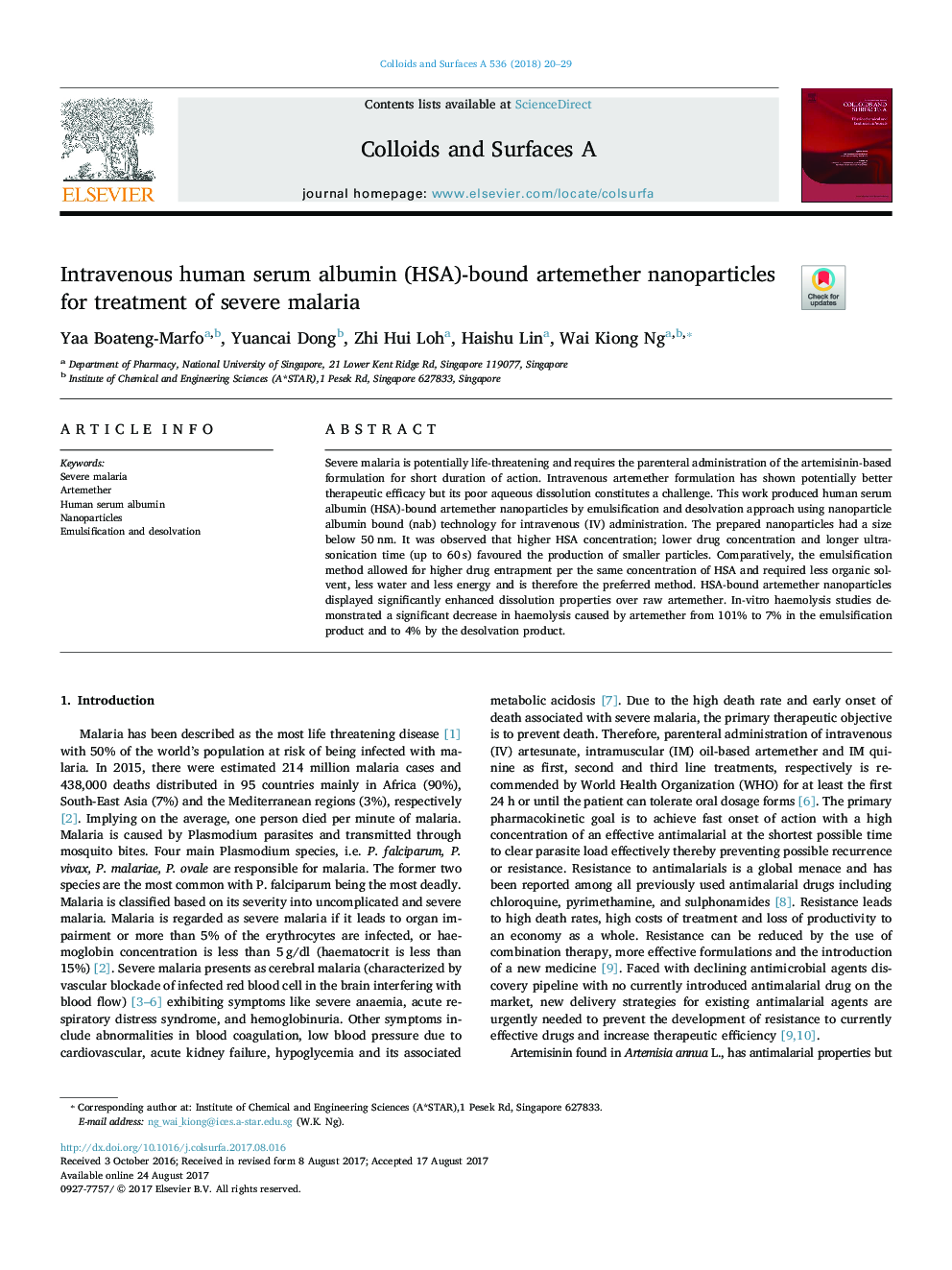| Article ID | Journal | Published Year | Pages | File Type |
|---|---|---|---|---|
| 6978114 | Colloids and Surfaces A: Physicochemical and Engineering Aspects | 2018 | 10 Pages |
Abstract
Severe malaria is potentially life-threatening and requires the parenteral administration of the artemisinin-based formulation for short duration of action. Intravenous artemether formulation has shown potentially better therapeutic efficacy but its poor aqueous dissolution constitutes a challenge. This work produced human serum albumin (HSA)-bound artemether nanoparticles by emulsification and desolvation approach using nanoparticle albumin bound (nab) technology for intravenous (IV) administration. The prepared nanoparticles had a size below 50Â nm. It was observed that higher HSA concentration; lower drug concentration and longer ultrasonication time (up to 60Â s) favoured the production of smaller particles. Comparatively, the emulsification method allowed for higher drug entrapment per the same concentration of HSA and required less organic solvent, less water and less energy and is therefore the preferred method. HSA-bound artemether nanoparticles displayed significantly enhanced dissolution properties over raw artemether. In-vitro haemolysis studies demonstrated a significant decrease in haemolysis caused by artemether from 101% to 7% in the emulsification product and to 4% by the desolvation product.
Related Topics
Physical Sciences and Engineering
Chemical Engineering
Colloid and Surface Chemistry
Authors
Yaa Boateng-Marfo, Yuancai Dong, Zhi Hui Loh, Lin Haishu, Wai Kiong Ng,
